You ask, MOSAiC scientists and crew answer!
Submit your #askmosaic questions
 #askmosaic: People, patterns, and power
#askmosaic: People, patterns, and power
This question was submitted by Alex from Seneca Falls Middle School: Do you have different shifts for people working and if so, does working at night interfere with a person's sleep patterns?
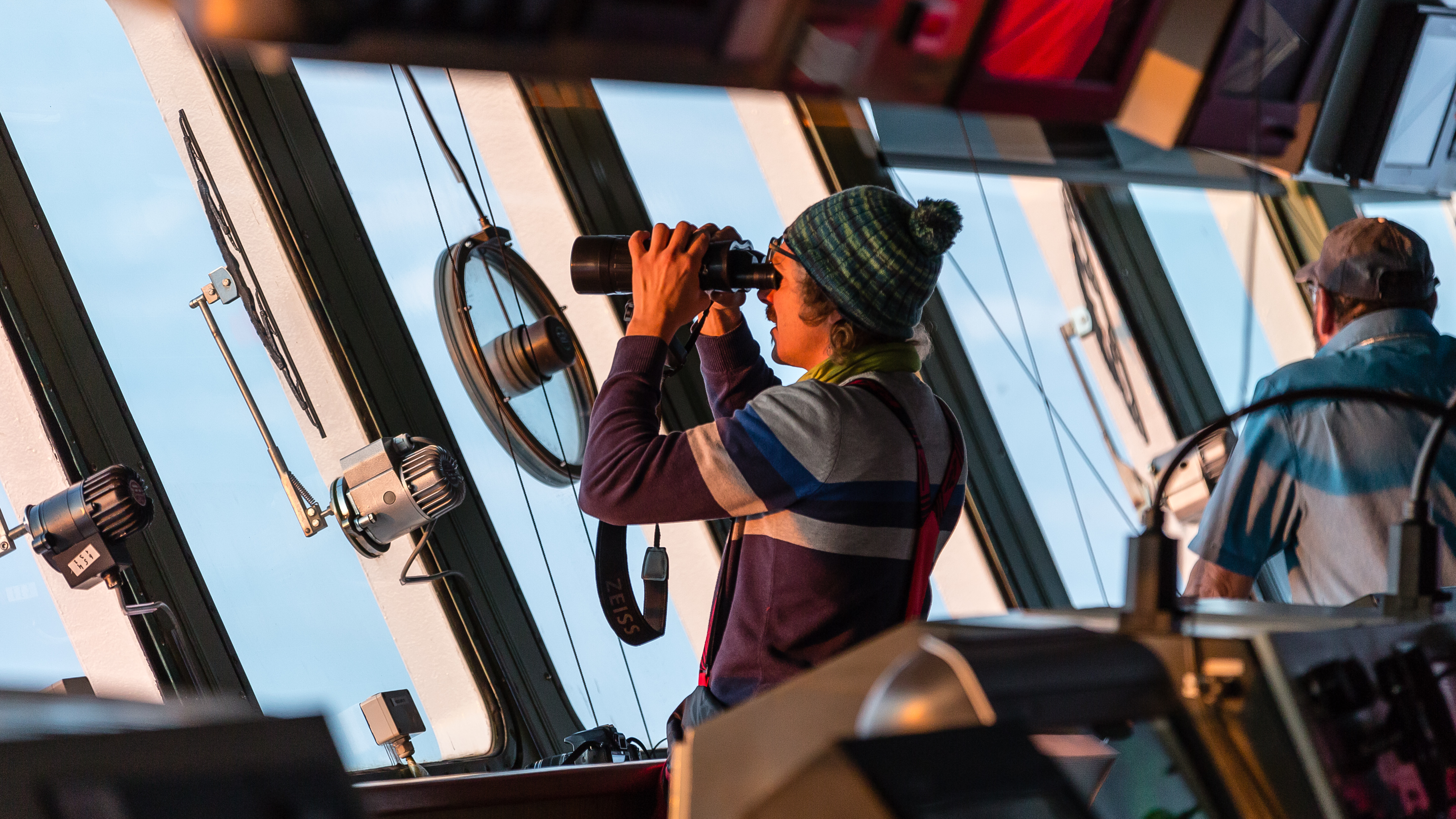
We are (were) all constantly working during (polar) night ; ). But for the scientists, the outdoor work usually takes place between 9 am and 5:30 pm, because during these hours we have the bear watch. Before and after the outdoor working hours there are meetings and people save and analyze their data. Parts of the ship’s crew work in shifts called 'watches' on board. For example, the nautical officers on the bridge are on watch two times for four hours: from 0 to 4 am and pm, from 4 to 8 am and pm, and from 8 to 12 am and pm. I just talked to one of them being on watch from 4:00 to 8:00 who told me, that for him this rhythm is no problem at all!
-Folke Mehrtens, Communications Office aboard the Polarstern during Leg II of the expedition
Photo (R): Thomas Sterbenz takes his turn on bridge watch; Photo credit: Stefan Hendricks
Jill from Middleton Middle School wants to know: What do you use as a power source for your equipment and ship?
The ship's diesel generators are our only source of power out on the ice and long power cables were installed to run the equipment at various sites out on the ice. Sometimes when the ice cracks open or ice ridges form the cables are trapped or damaged and we need to move them to new locations. This happend several times during leg 1. When the sun rises again a few remote instruments may be able to use solar power.
-Byron Blomquist, University of Colorado Boulder/NOAA, MOSAiC Team Atmosphere. Byron participated in Leg 1 of the expedition.
 #askmosaic: Light and Dark
#askmosaic: Light and Dark
This question was sent by Charlotte from Saratoga Springs High School: I live in area with light pollution. Since you are pretty remote, how is the night sky? Is it a lot different from what you experienced in your hometown?
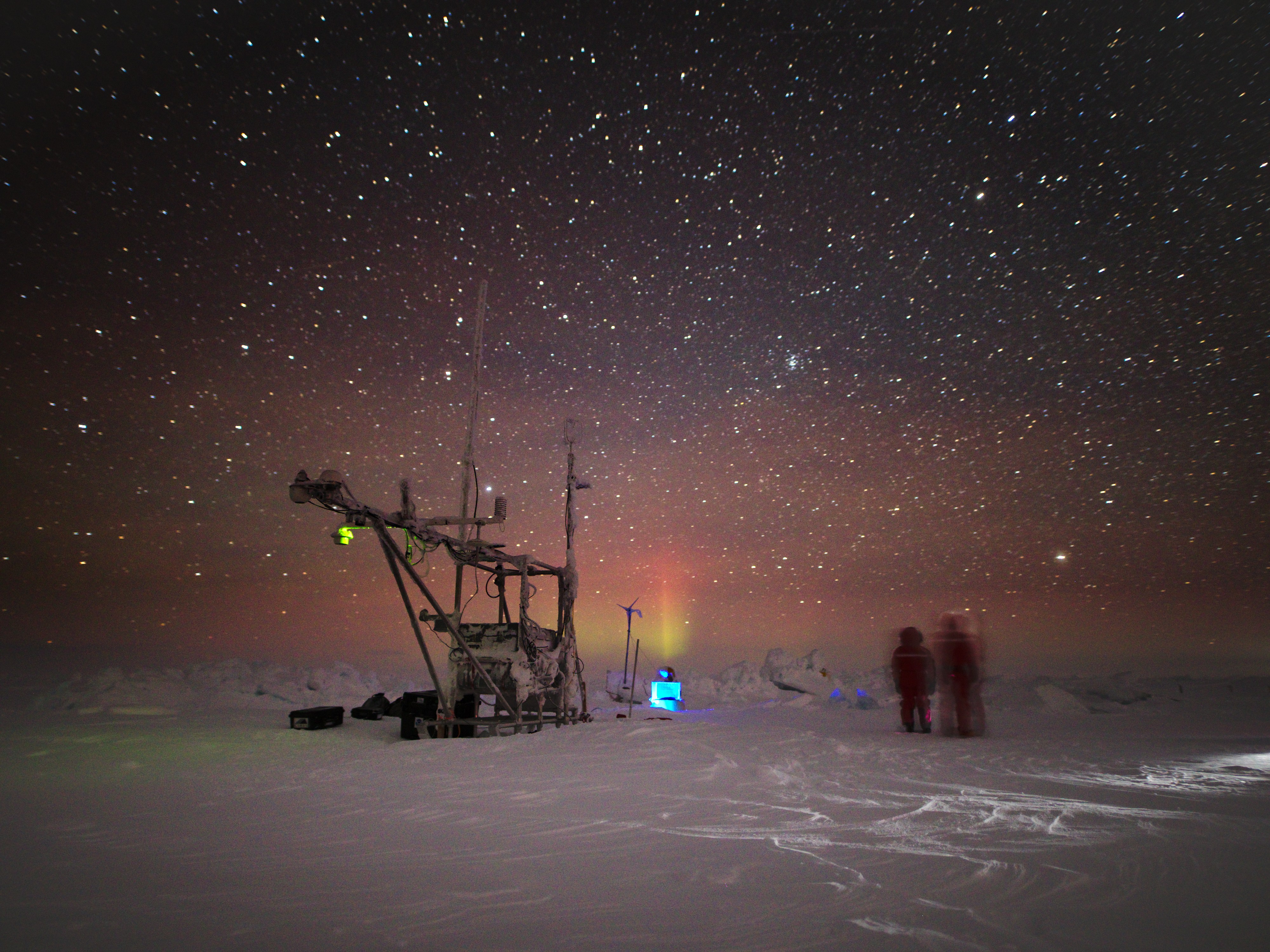
"The polar night seems like a long time ago. We are currently in full daylight, but this will switch over very quickly to polar night in the coming month. It happens over just a few days this far north. But of course there will still be some light until the sun descends even lower below the horizon.
I am from southern New England and even though I am don’t live near a city there is a lot of light pollution and the sky is not very dark compared to say some remote areas in northern New Hampshire. During Leg 2 when we were in the middle of the polar night there was plenty of light pollution near the ship, but if you were able to get a few kilometers away from the ship the sky was quite amazing. The background was as black as I have ever seen and stars were bright and crisp. It made them seem so much closer. When the moon was out it stood out as well. It appeared as though I could see a lot more detail than I could see back at home.
If you can’t make it to the high Arctic, try making a trip to a remote area to view the night sky. It is well worth it."
-Bob Campbell, University of Rhode Island, MOSAiC Team Eco; Bob is currently on board the Polarstern for leg 5.
Photo: MOSAiC researchers stand next to the Meteorological Sled during the polar night of leg 2; Photo credit: Dr. Michael Gallagher, michael.r.gallagher@noaa.gov
 #askmosaic: Out of Reach
#askmosaic: Out of Reach
This question was submitted by Steve from Costa Mesa, California: What are the challenges with collecting data in the oceans vs. the atmosphere?
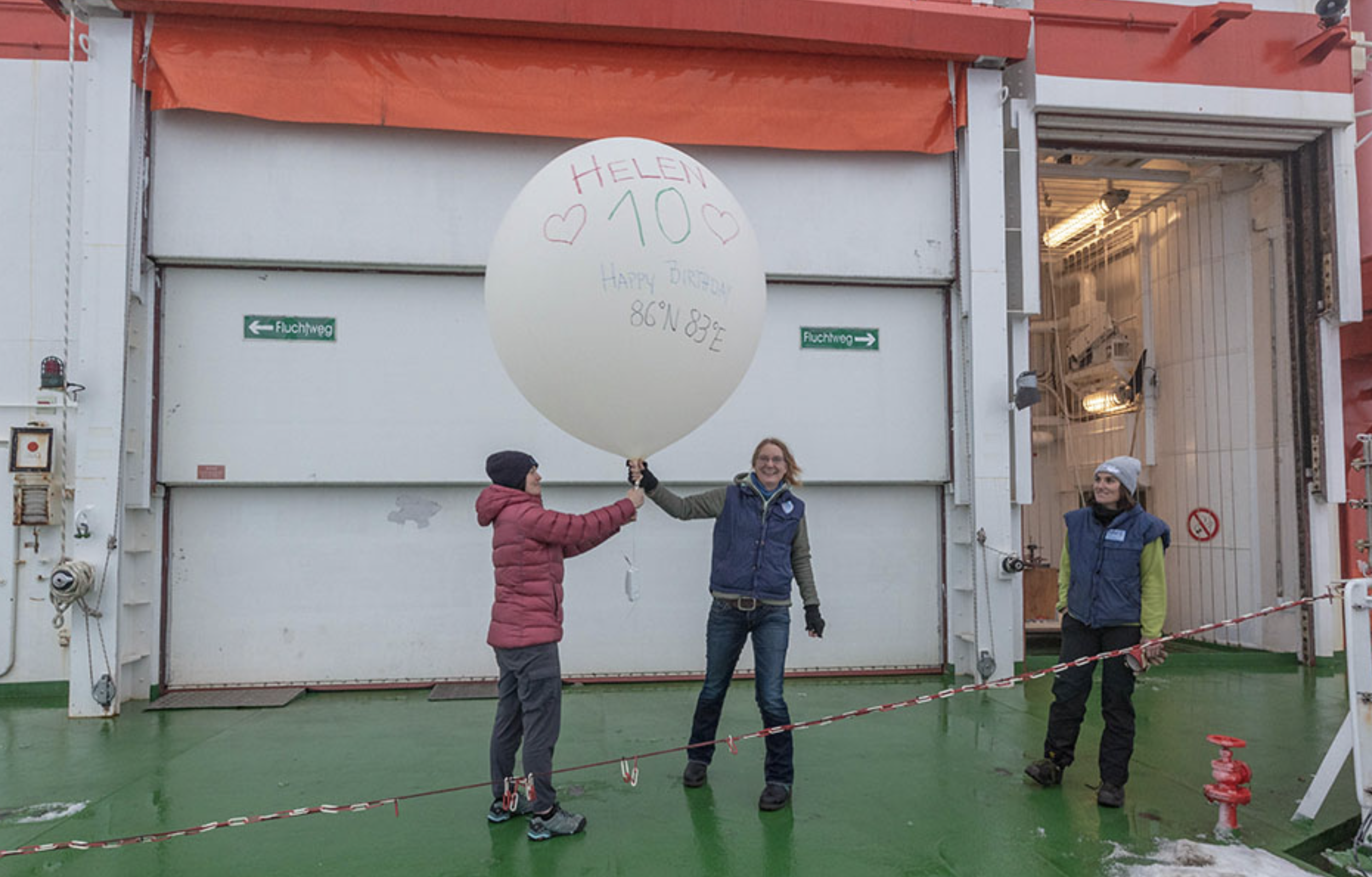
"Hmm. This is a deep question (pun intended?). The challenges depend on the kind of data or sample you want to collect. On a ship, or out on the sea ice, we are at the surface of the ocean - the interface between the ocean and atmosphere - so most of our studies focus on this thin interface. This would be, for example, the top 20 meters of the ocean and the lowest 20 meters of the atmosphere. Making measurements near the surface takes a lot of work, but we can do it. And the challenges of dealing with the weather and with cold fingers are about the same for atmosphere and ocean.
If you want samples from high in the atmosphere or deep in the ocean it takes special equipment. For example, we launch weather balloons every 6 hours to measure temperature, humidity and winds in the upper atmosphere. The balloons are fairly easy to launch. But, in general, we can't directly measure or collect air samples high in the atmosphere without an airplane, which unfortunately we don't have for MOSAiC.
Photo: MOSAiC scientists prepare to launch a weather balloon that will ascend ~35 km up into the atmosphere and send back information about the atmospheric temperature, wind speed, humidity, and more. Photo credit: Lianna Nixon, CIRES/CU Boulder
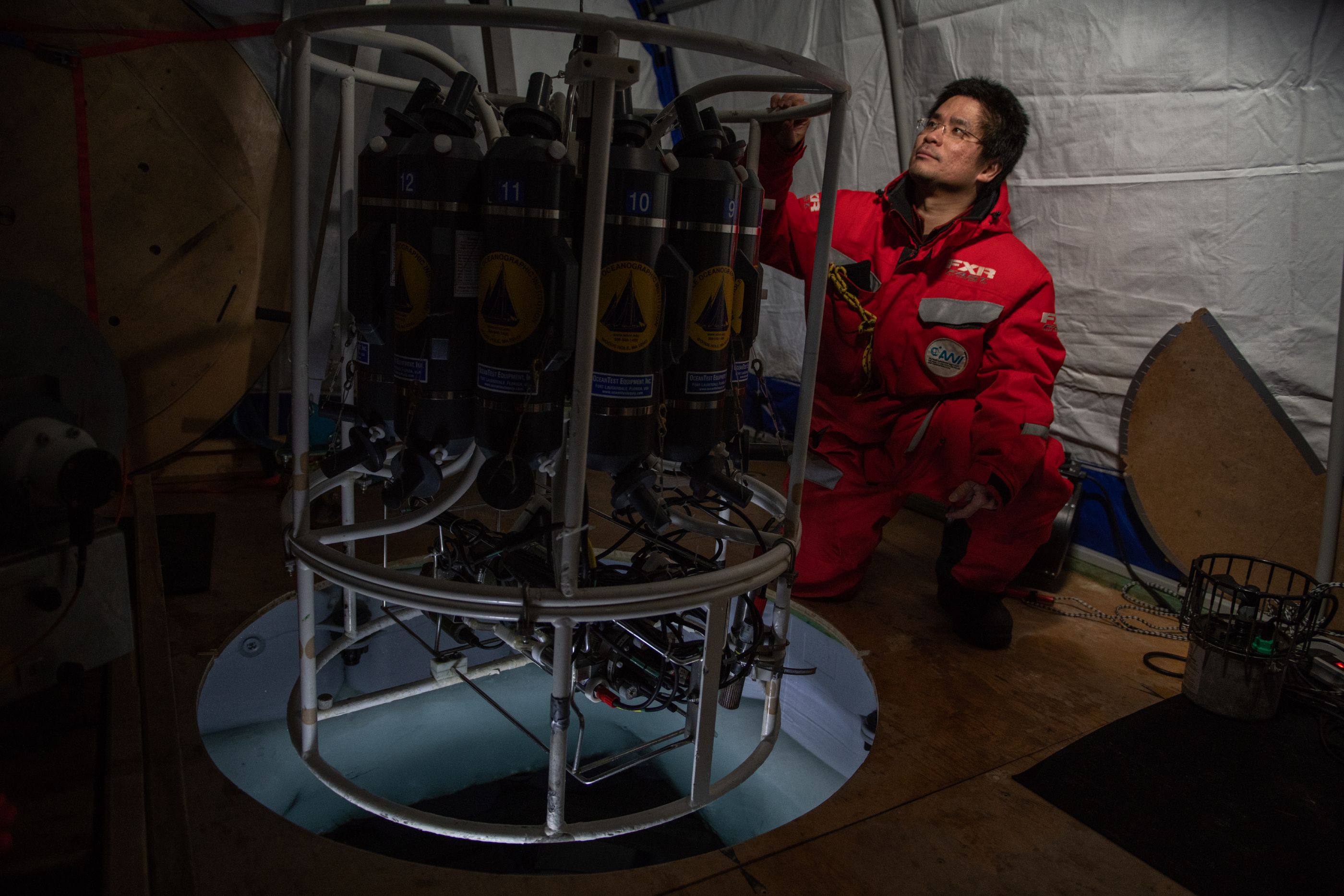
The oceanographers use a water sampling system on a cable (the CTD rosette) to make measurements and collect water samples over the entire depth of the ocean. One CTD cast can take several hours and may involve 6-8 people to run the CTD and process all the samples. So, the CTD takes much more work, but you get a lot of information from all the water samples. So, when it comes to direct sampling I'd say the oceanographers have a better situation. And the oceanographers have made great progress in recent years with autonomous gliders and buoys to extend their observational capabilities.
Photo: MOSAiC scientist Ying Chih-Fang checks the CTD before lowering it down through the ice; Photo credit: Esther Horvath/AWI
Remote sensing systems collect the greatest amount of data over the height of the atmosphere and depth of the ocean because they run continuously and don't generally require much attention from people. These are things like weather RADAR and LIDAR systems for the atmosphere, or acoustic SONAR systems in the ocean. The RADAR/LIDAR systems allow us to measure wind speeds, cloud properties and small particles (aerosols) up to several kilometers above the surface. On the ocean side, the acoustic instruments measure currents to several hundred meters below the ship and can reveal the presence of fish or other particles in the water column. The atmosphere is transparent to a wide spectrum of visible light and microwaves, so the variety of remote sensing systems on the air side is much greater than for the ocean, where they can only use sound pulses. And for the atmosphere we also have satellites looking down from space measuring a very wide variety of atmospheric and surface properties over the entire earth. So, I'd say the atmosphere team has a better situation when it comes to collecting data by remote sensing."
-Byron Blomquist, CIRES/NOAA, member of MOSAiC teams ATMOS, BGC, ECO
Read more in Byron's blogs from the Polarstern
 #askmosaic: Expedition Essentials
#askmosaic: Expedition Essentials
Submitted question: Is there anything you brought with you to the Arctic that you were really glad to have?
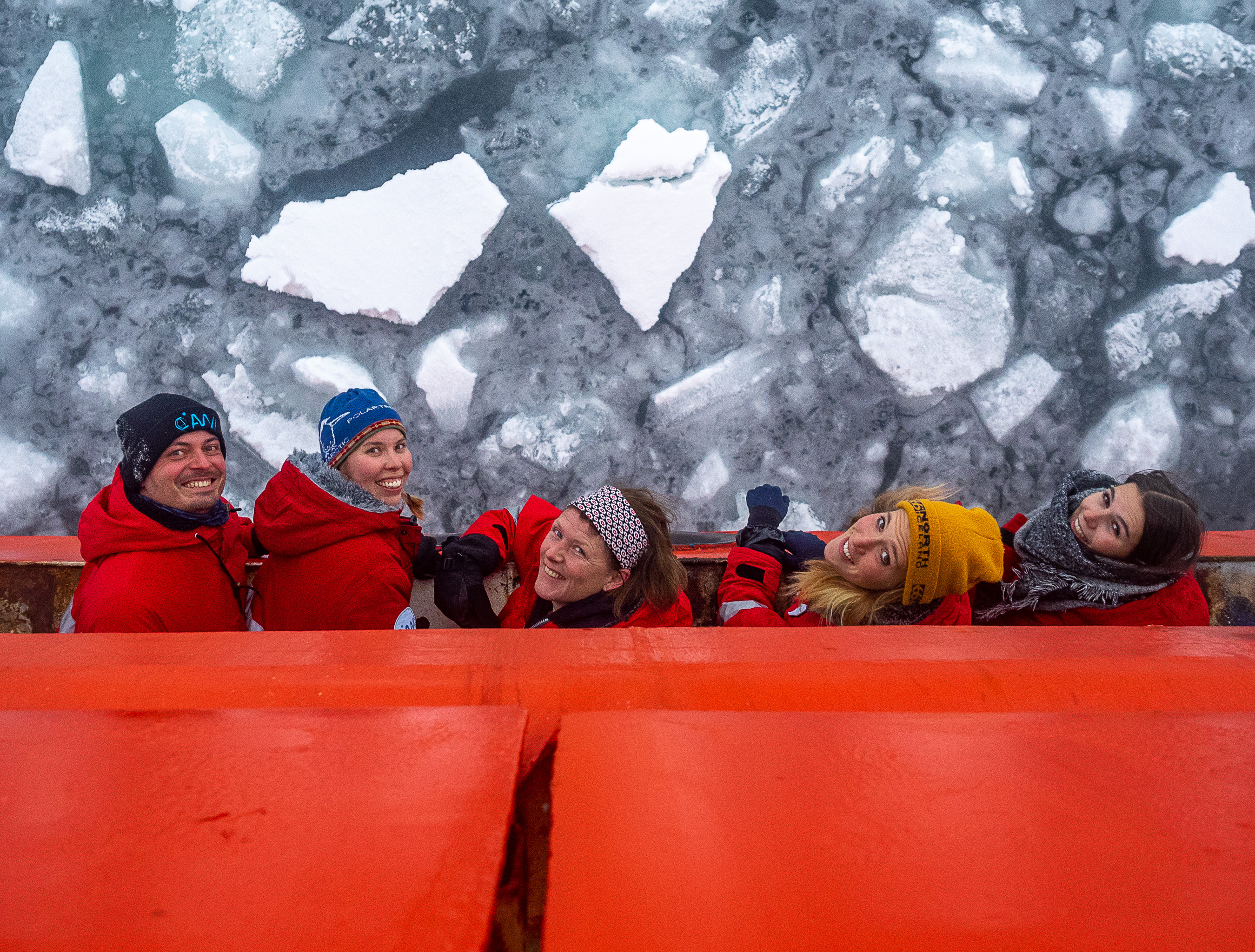
"Good question! I was really happy for the books I brought (lots of time spent in transit) and for the decks of cards that I brought (we played a lot of cards)."
-Anne Gold, CIRES/CU Boulder and MOSAiC School Educator. Anne was part of the team on the Akademik Fedorov that set up the distributed network of instruments during leg 1 of the expedition.
Photo (from left to right): Falk Ebert, Katie Gavenus, Anne Gold, Friederike Krüger, and Lisa- Marie Heusinger on board the Akademik Fedorov; Photo credit: Marc Oggier
 #askmosaic: Remote but not Alone
#askmosaic: Remote but not Alone
This question was submitted by Ashlyn from Middleton Middle School: Is it scary at all, being out there alone in the Arctic?
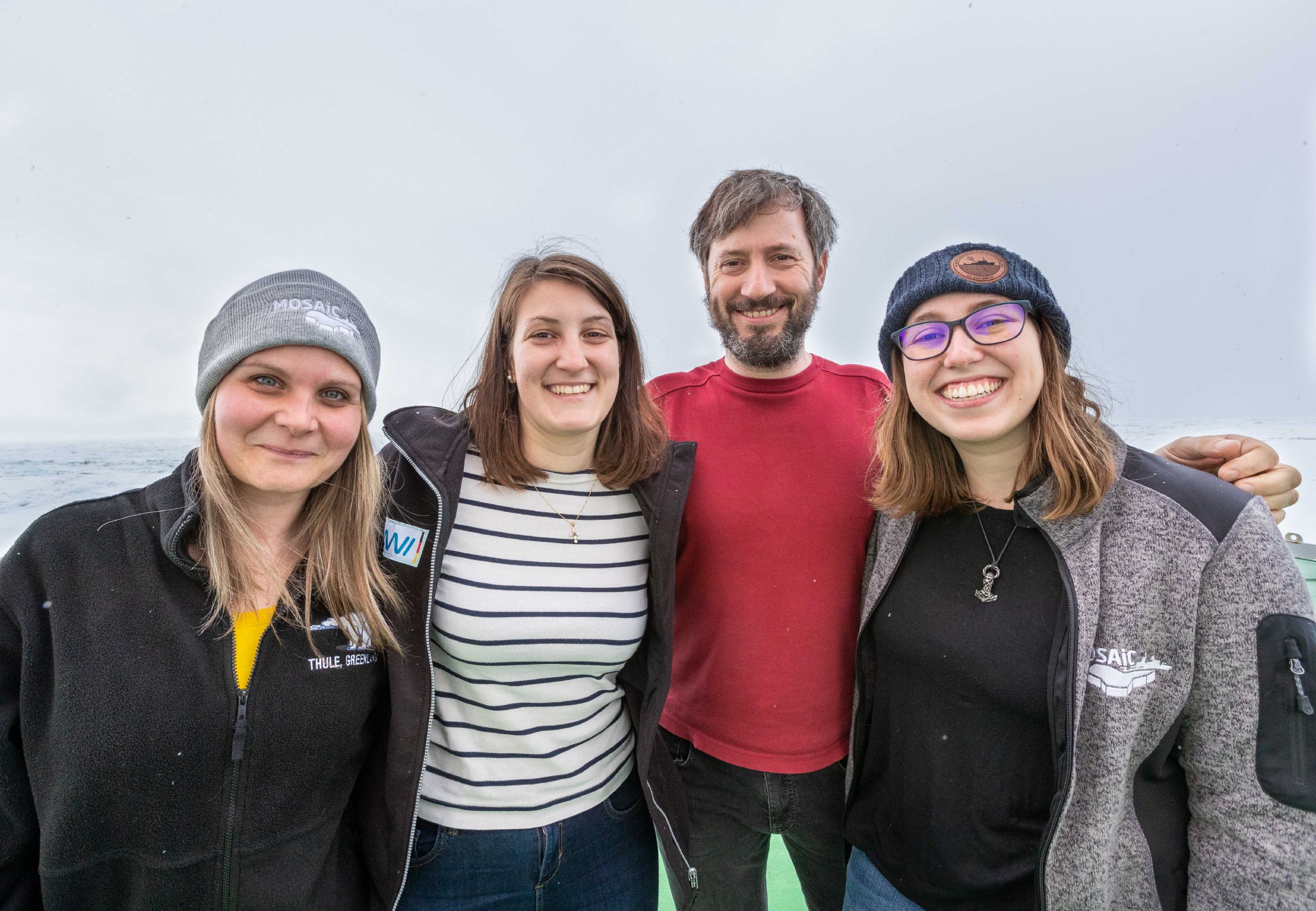
"Good question, but surprisingly not really, no. First of all, on a ship, you are never actually alone. You are constantly surrounded by your colleagues and teammates. We take all of our meals together, work in the field together, and almost everyone on board has a roommate. In addition, we are lucky to have an incredible ship's crew and logistics team who work hard to keep us comfortable and safe every day both on and off the ice. Even being far away from the rest of the world, we have each other to lean on, and with that knowledge, I know I don't feel so afraid. Occasionally we do get the chance to leave the primary field camp though and explore/collect samples far away from the ship. In these moments, the Arctic does feel much more wild and dangerous - although mostly it's just nice to get away from the busy ship noise and experience the peace and quiet of the ice."
-Emelia Chamberlain, Scripps Institution of Oceanography, MOSAiC Team ECO and BGC
Photo (left to right): Allesandra D'Angelo, Debby Bozzaato, Falk Patzold, Emelia Chamberlain of Leg 4 Team Biogeochemistry; Photo credit: Lianna Nixon, CIRES/CU Boulder
 #askmosaic: A Plethora of Polar Bears
#askmosaic: A Plethora of Polar Bears
This week's question comes from Corbett from Middleton Middle School: How many polar bears have you seen?
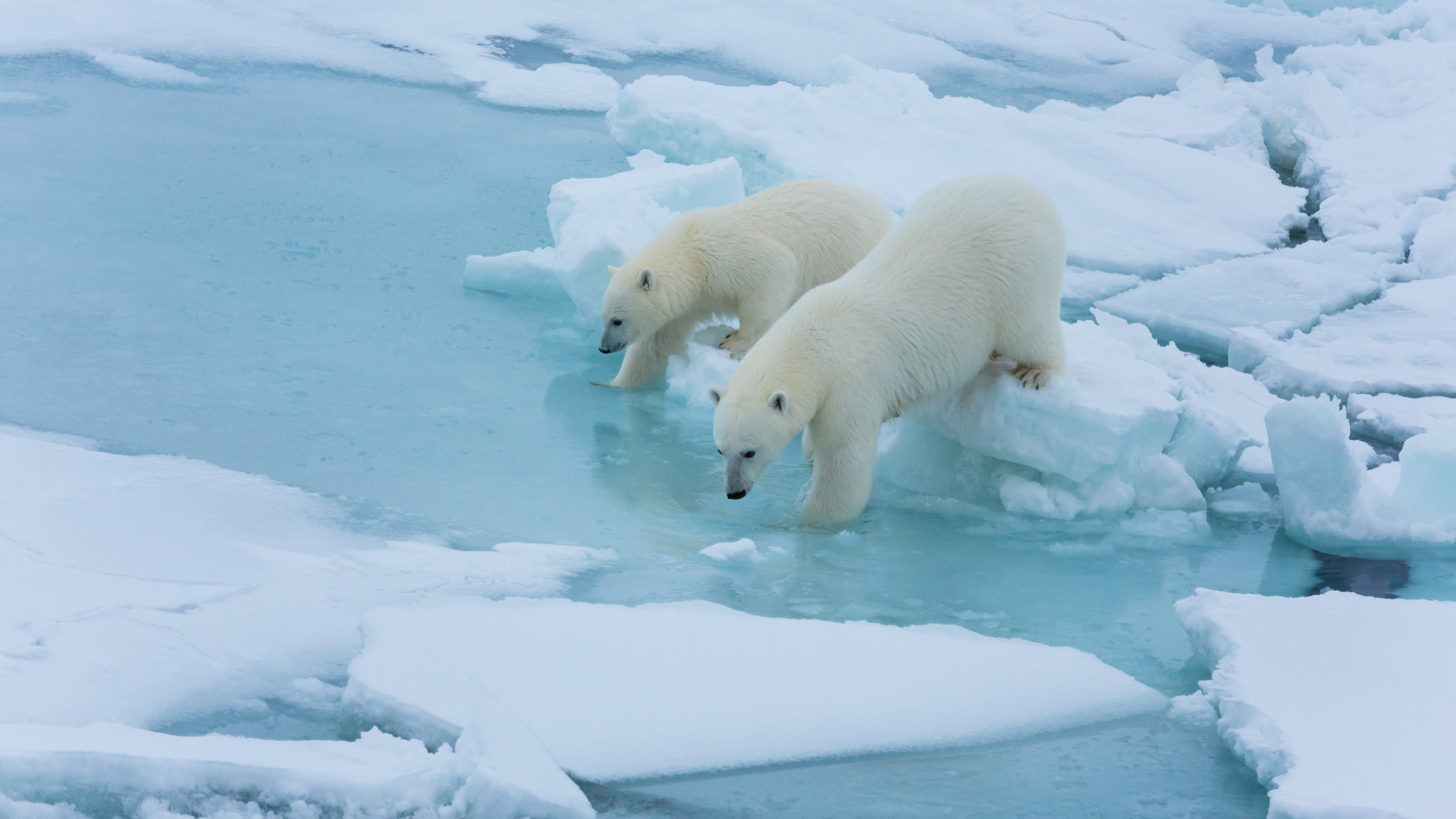
During this leg alone, expedition participants have had 19 encounters with polar bears! Although this sounds like a lot, it isn't terribly surprising as the Polarstern has drifted closer and closer to the ice edge where polar bears like to hang out and hunt. Fortunately the MOSAiC safety and logistics team has always made sure both the polar bears and expedition team members are safe and stay far away from one another.
Photo credit: Lianna Nixon/CIRES
 #askmosaic: Ice Spy
#askmosaic: Ice Spy
This week's question was sent by Everett and Emmett from Double Eagle Elementary School in Albuquerque: Can you play the game 'I spy' in the Arctic?
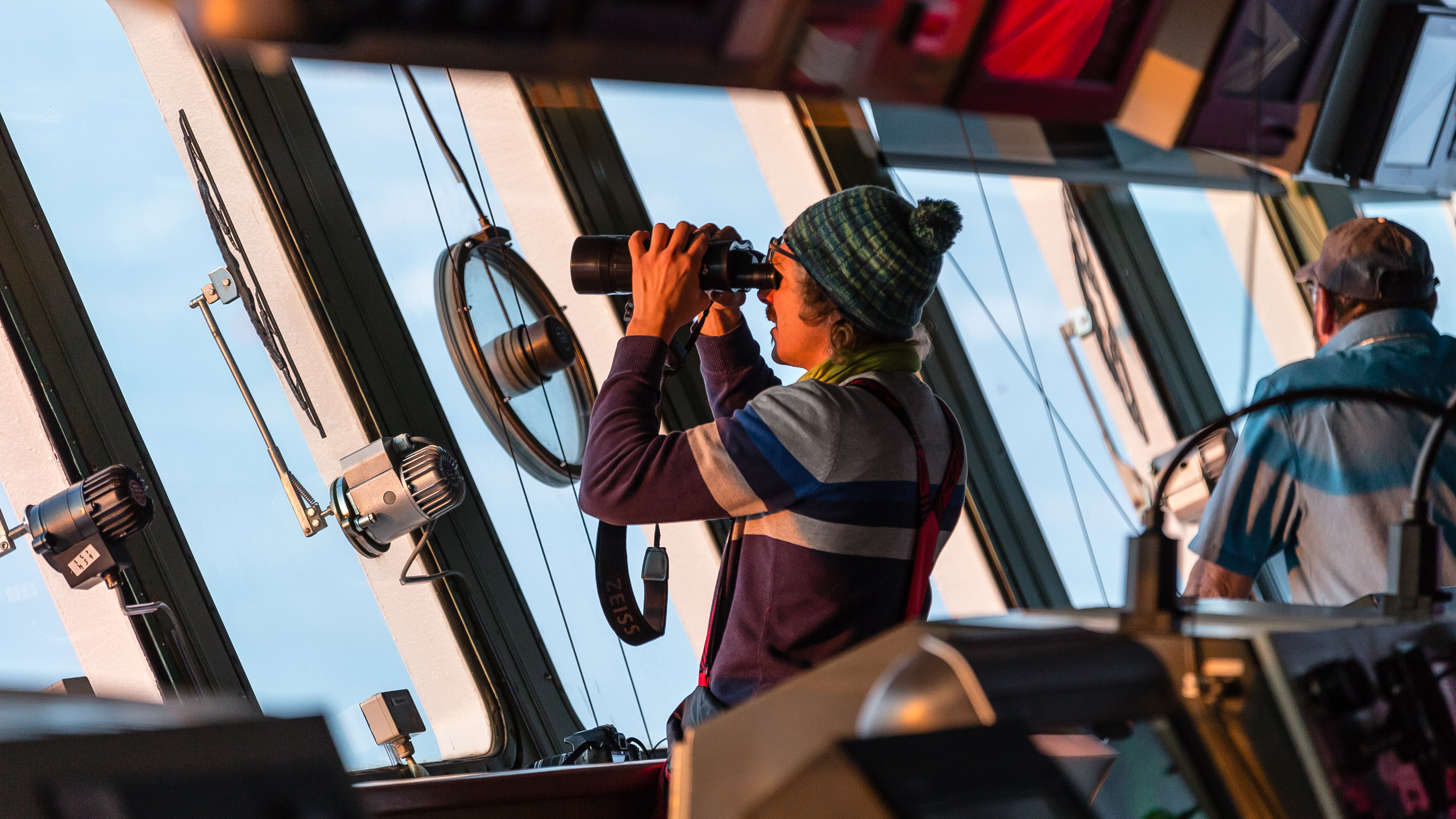
"While not a game, we have people on the ice and on the ship's bridge whose only job is to watch for bears. We all do this job, usually in shifts of 1-2 hours. As we have drifted more to the south we occasionally see birds; gulls and snow buntings, for example. The message of an animal sighting comes over the radio and everyone looks for it. With all of the movement of the ice for many weeks I played a game of "I spy" or maybe more like Where's Waldo with Met City in the morning, as it would often be in a different place when I woke up than where I left it when I went to sleep."
-Chris Cox, NOAA; Chris recently returned from leg 3 of the expedition
Photo: Thomas Sterbenz during bridge watch, 5th of October 2019; Photo credit: Stefan Hendricks/AWI
 #askmosaic: Hot and Cold
#askmosaic: Hot and Cold
This week's question was submitted by Daniel from Middleton Middle School: Which month is the coldest month in the Arctic? Hottest?
Great question! We've been tracking conditions in the Arctic now since last September. Check out the weekly tracking data in the latest MOSAiC Monday. What do you notice about how the temperatures in the Arctic have changed with the seasons? How cold did it get in the Arctic winter? What have temperatures been like recently, during the Arctic summer? With the data that we have, what can you say about what have been the coldest and warmest months in the Arctic so far during the MOSAiC expedition? How do these temperature ranges compare to where you live?
Photo credit: Matthew Shupe, CIRES/NOAA
 #askmosaic: Living on (Un)Stable Ground
#askmosaic: Living on (Un)Stable Ground
Eliana from Middleton Middle School wants to know: Does it feel weird having your ship on ice?
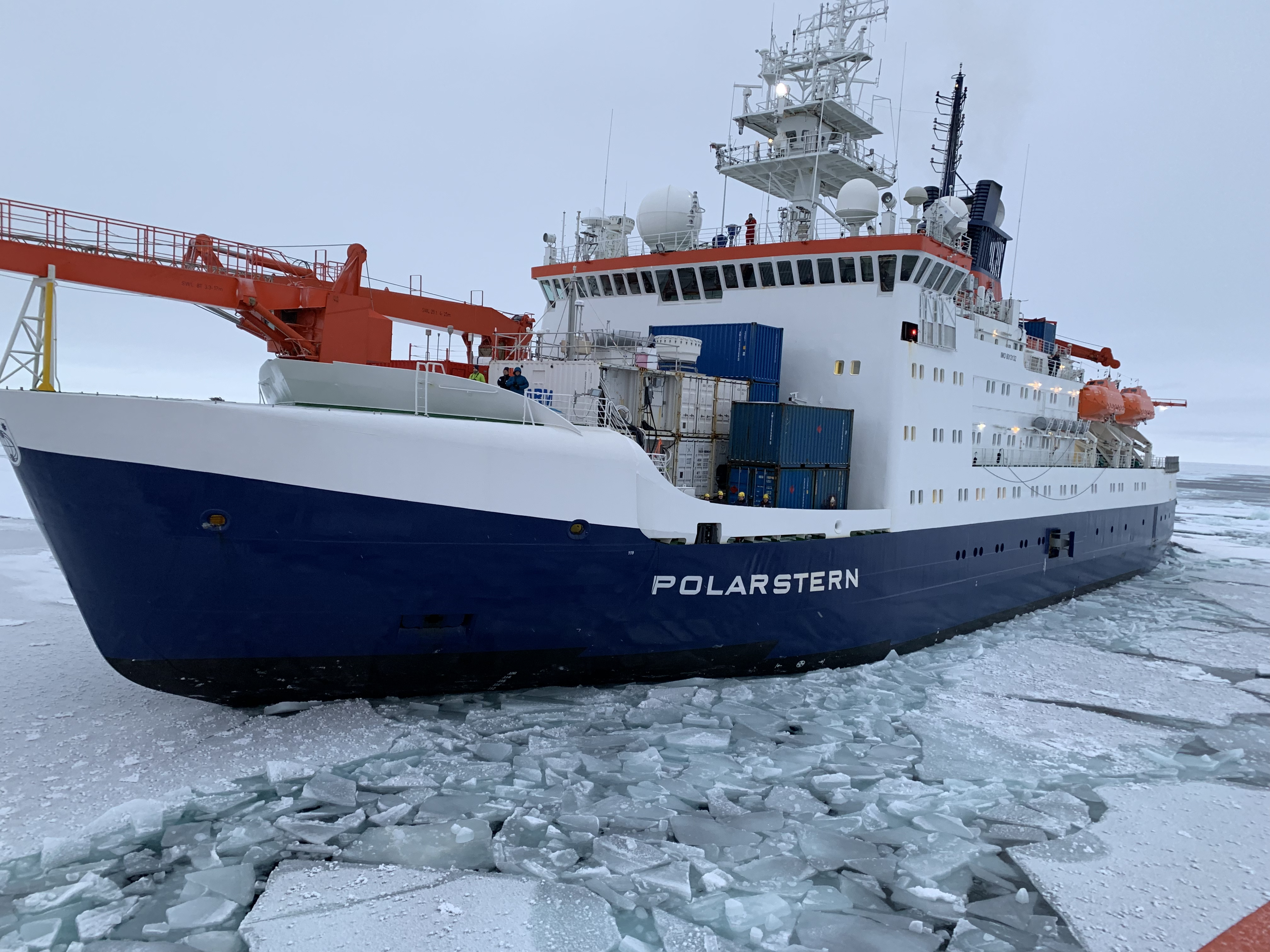
"There are no waves so the ship usually stays very still. Sometimes you forget you are on a ship at all! However, when the ice is moving, sometimes it makes noises as it rubs against the ship. My cabin [was] on a lower deck and I [could] hear the ice when I [was] trying to sleep."
-Chris Cox, NOAA; Chris just returned from leg 3 of the expedition
Photo credit: Anne Gold, CIRES
 #askmosaic: Nicebreaker?
#askmosaic: Nicebreaker?
Submitted question: Is the ship fancy?
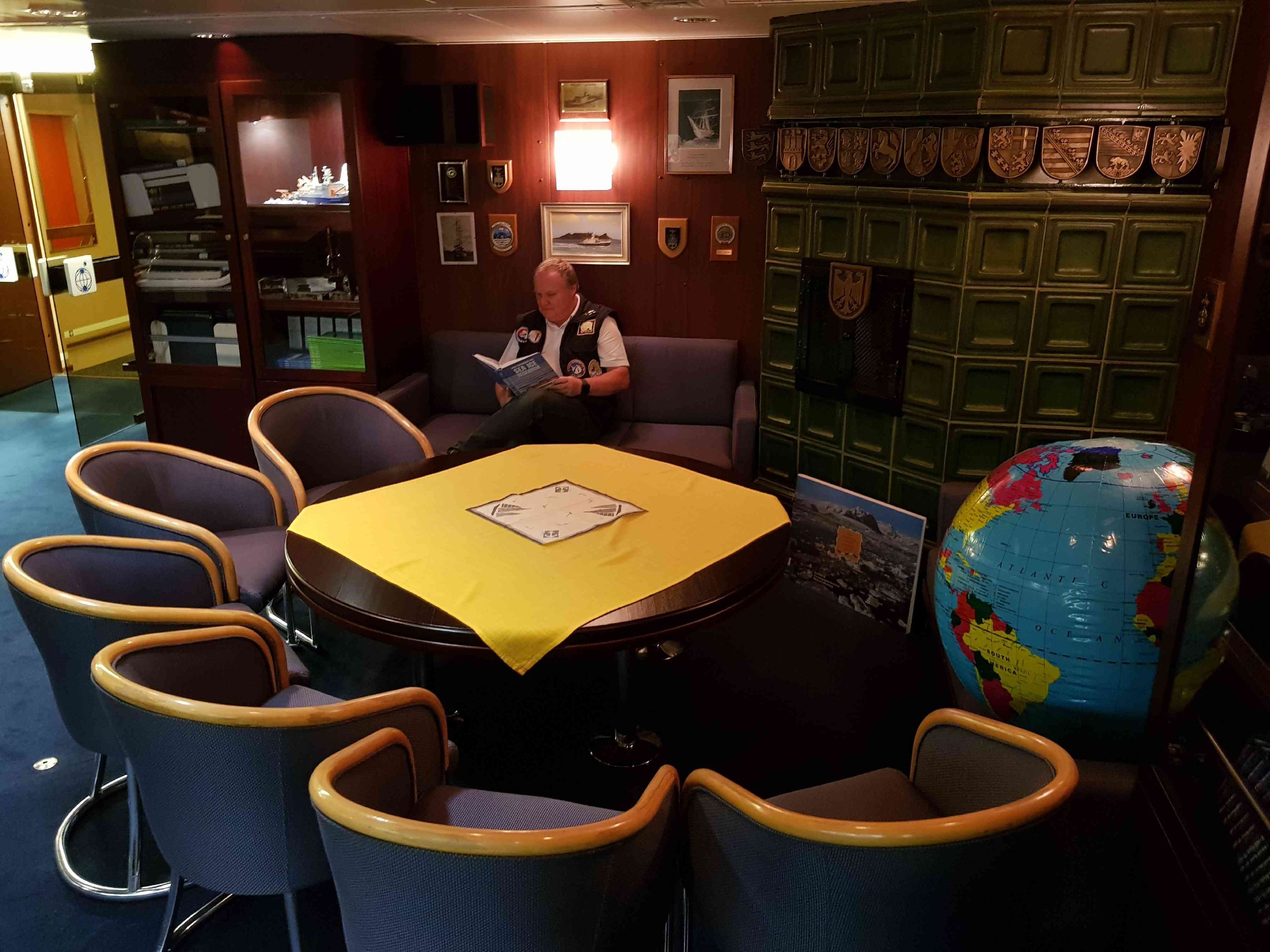
"For us scientists Polarstern is a very “fancy” ship because of all its scientific installations, the well-experienced crew and a good atmosphere. It provides almost everything we could wish for. However it is not “fancy” as compared to a luxurious cruise ship. For us, a cruise vessel would not be fancy at all, because it would not provide us with big cranes, electricians to fix our devices or highly specialized computer networks. We do have a pool and a sauna, but this is definitely not comparable to a wellness temple on a fancy cruise vessel."
-Christian Katlein, Team ICE, Alfred Wegener Institute
Photo credit: Thomas Wunderlich, AWI
 #askmosaic: Ice Cream on an Icebreaker
#askmosaic: Ice Cream on an Icebreaker
This question was submitted by Everett & Emmett from Double Eagle Elementary School in Albuquerque: Can you make ice cream outside?
"One team member used to shake a tub containing powdered milk, sugar, salt and strawberry jelly as part of his exercise routine out on the deck of the Kapitan Dranitsyn during the transit in February when it was in the -30s C (very cold!). He made ice cream this way and it was quite good!"
-Chris Cox, NOAA; Chris was on leg 3 of the expedition
Photo credit: Thomas Wunderlich, AWI
 #askmosaic: Lift With Your Skis
#askmosaic: Lift With Your Skis
This question was submitted by Robert and Zion from Seneca Falls Middle School: What is the heaviest piece of equipment someone has had to carry?
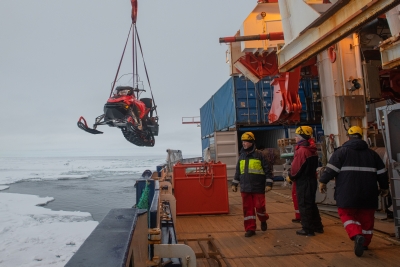
"For the Remote Sensing team, all of our equipment is quite heavy (over 100 kgs or 220 lbs per instrument) and requires a crane to lift it from the ship onto the ice. Then we tow it on a sled with skidoos to the site for deployment. However, one of the instruments that we have to install, a wide-band passive microwave radiometer consists of a 110 kg (almost 243 lbs) pedestal we have to carry by hand to where we set up the instrument. This took 4 people to move into place. Then we had to place 70 kgs (154 lbs) on top of the 2-meter (~6.5 ft) pedestal, standing on boxes to reach the top of the pedestal, and trying not to let it drop on our heads. Then we crank the pedestal up to 6 m (20 ft) height. That is by far the heaviest instrument we have had to carry by hand!"
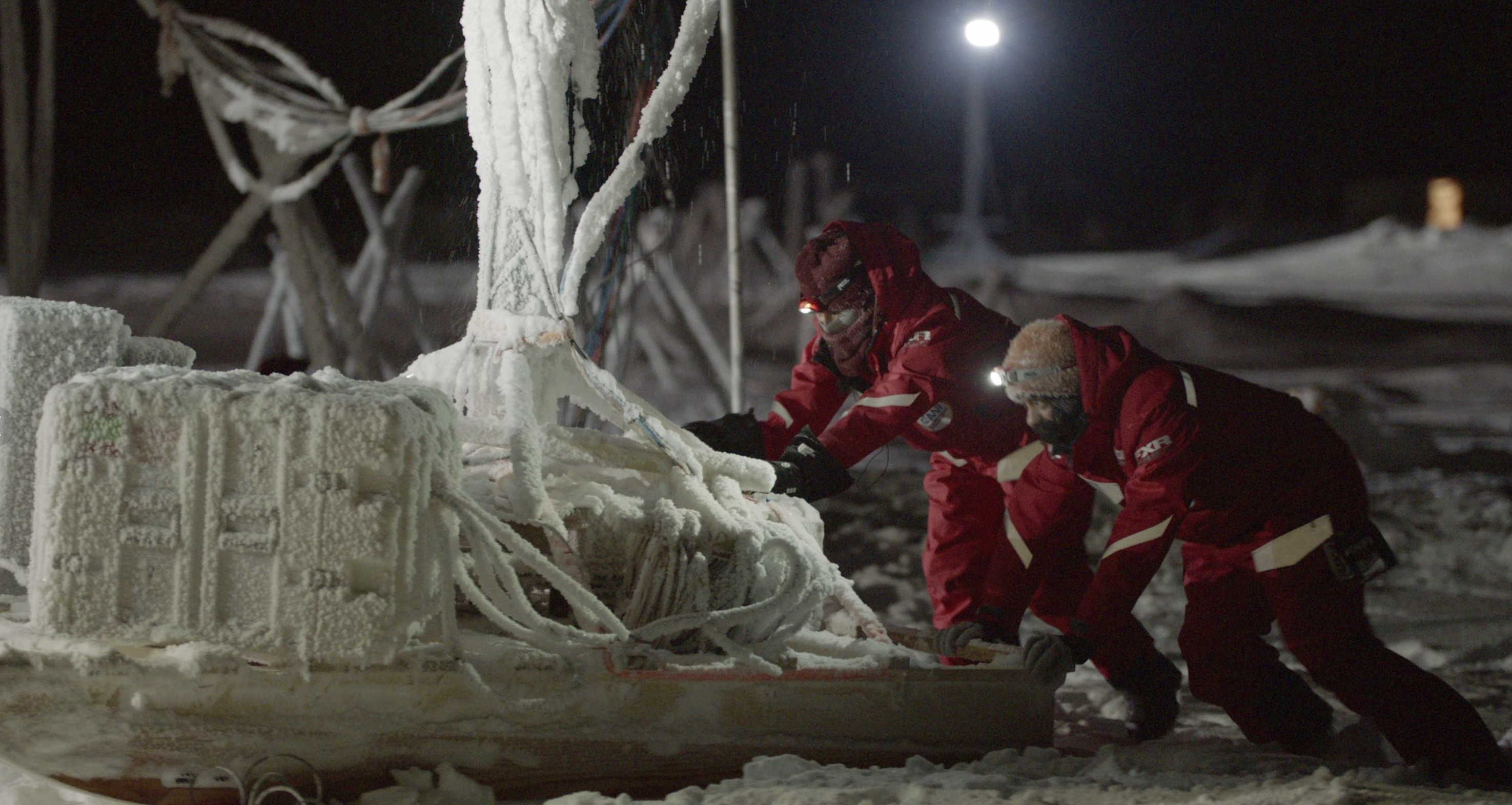
-Julienne Stroeve, University of Manitoba, MOSAiC Team ICE and Remote Sensing
Photo (above): The Polarstern's crane lifts a skidoo onto the ice during MOSAiC Leg I; Photo credit: Esther Horvath/AWI
Photo (left): Julienne Stroeve and Vishnu Nandan, both members of Team ICE and Remote Sensing, push a remote sensing instrument across the sea ice in polar darkness and below freezing temperatures; Photo credit: Lars Barthel/AWI
 #askmosaic: Changes in the Ice
#askmosaic: Changes in the Ice
This question was submitted by Mrs. Jurcsek's 5th grade class: Have you seen changes in the ice since you've been there? What kind if you did?
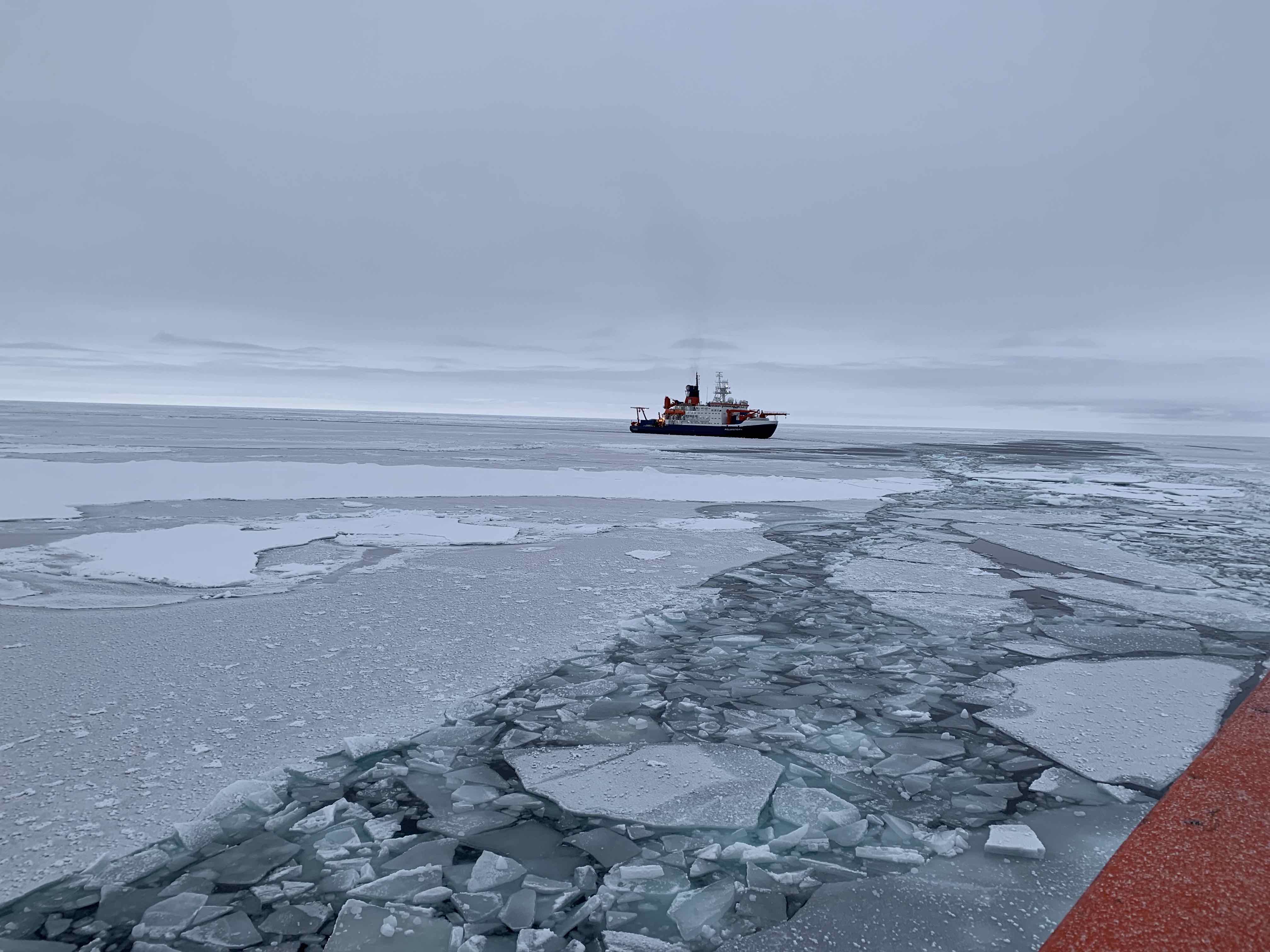
"The ice is constantly changing and, if not the ice, at least the snow on top of the ice is changing the landscape from day to day. But we observe different kinds of changes: When we arrived, some 7 weeks ago, large factions of our ice floe were only 30-40 cm (~12-16 in) thick. This ice has now grown to some 80 cm (~31.5 in)! This continuous growth is because of the ocean freezing
The more obvious and abrupt changes are dynamic changes in the ice. Winds and ocean tides keep the ice moving all the time. As a consequence, the ice cracks at one place and leaves open water, and piles up in other places and builds so called 'pressure ridges.' The floe has broken into many sub-floes. All of the ridges catch a lot of snow that is blown around by the wind...the surface is a little different every day, but looking back in time changes appear dramatic."
-Dr. Marcel Nicolaus, Sea Ice Physicist at the Alfred Wegener Institute and a member of the MOSAIC Sea Ice Team. Dr. Nicolaus is currently on board the Polarstern.
Photo: View of the Polarstern from the Fedorov; Photo credit: Anne Gold, CIRES
Learn All About Sea Ice from the National Snow and Ice Data Center
Submit your #askmosaic questions
